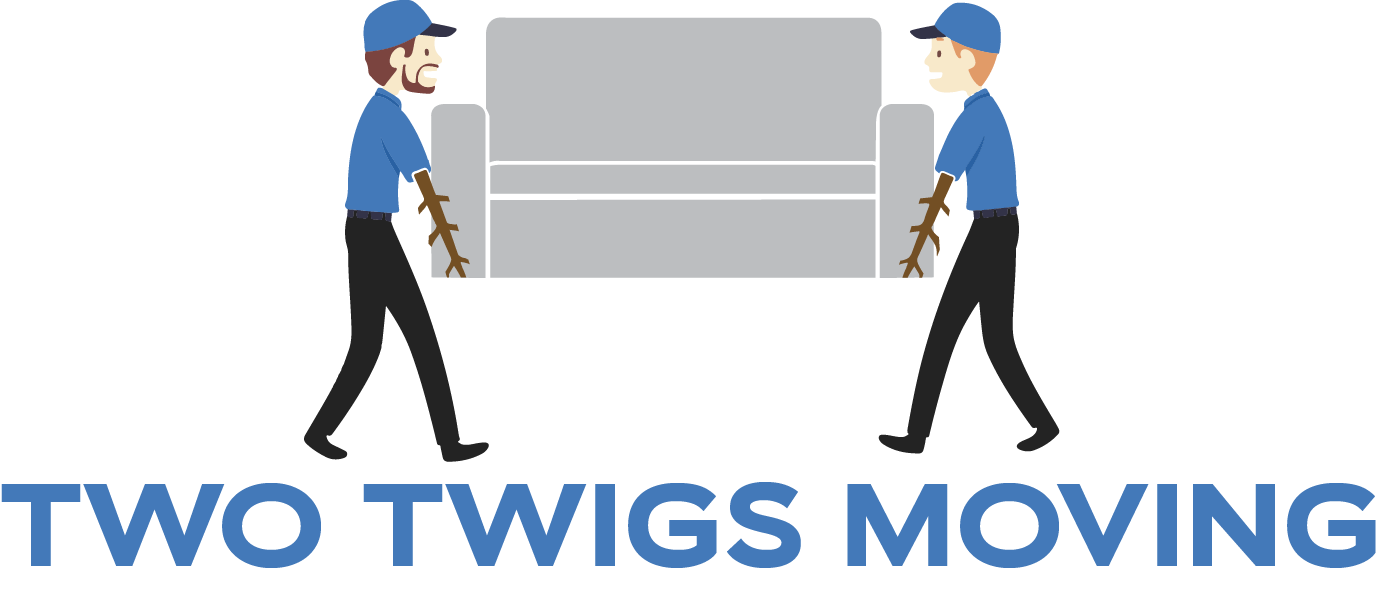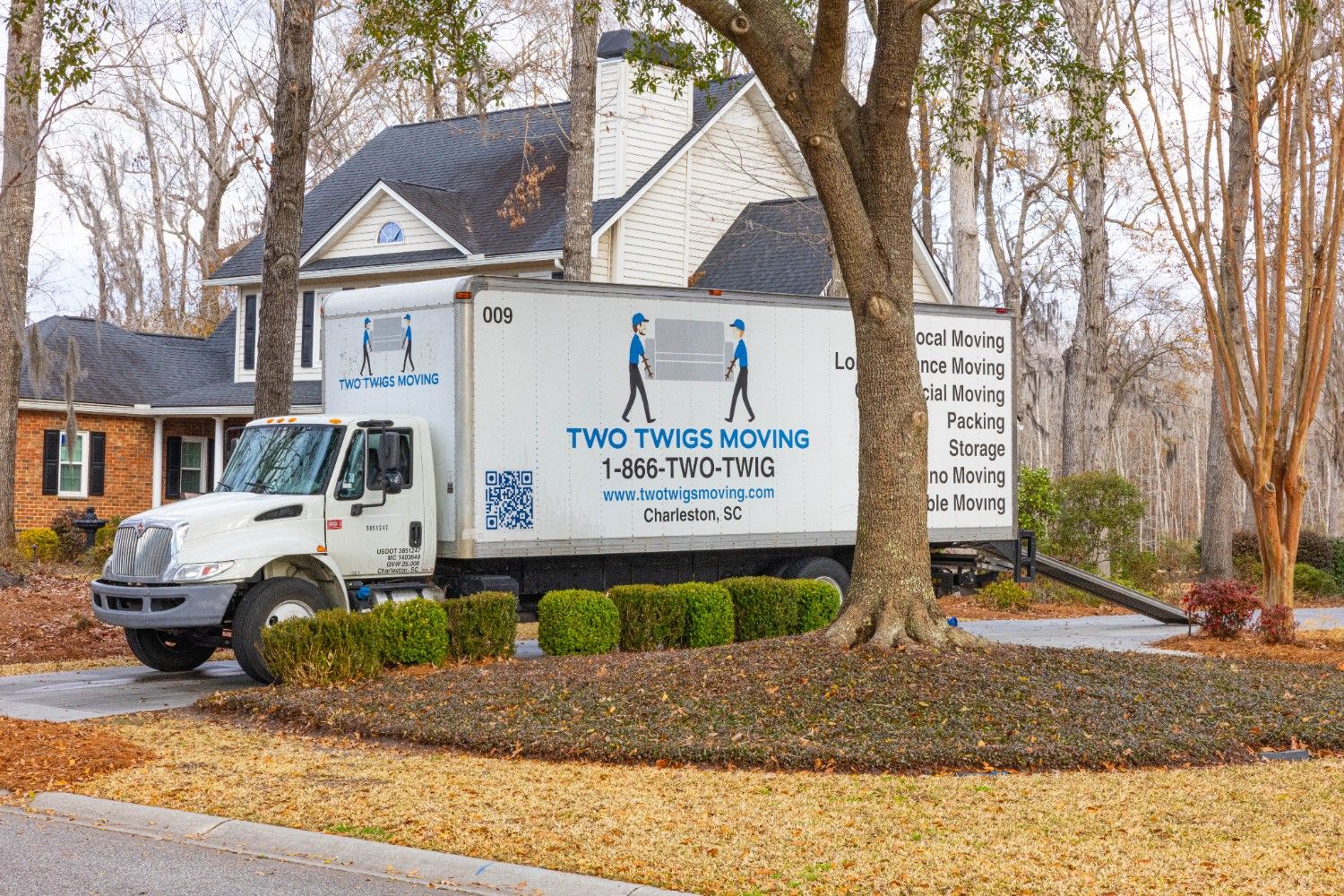Moving locally or long distance? Here’s what you need to know about costs:
- Local Moves: Charged hourly, costs range from $300 to $1,500. Rates depend on the number of movers, home size, and hours worked. A three-bedroom home averages $1,400.
- Long-Distance Moves: Priced by weight and distance, starting at $2,000. A typical 1,000-mile move for a three-bedroom home averages $5,500.
- Key Drivers of Cost:
- Local: Time, labor, and accessibility (stairs, parking).
- Long-Distance: Weight, mileage, fuel, and tolls.
- Add-Ons: Packing services, storage, and specialty items (e.g., pianos) increase costs for both move types.
Quick Comparison
| Factor | Local Move | Long-Distance Move |
|---|---|---|
| Pricing Method | Hourly ($45–$80 per mover) | Weight + Distance ($0.50–$0.80/lb) |
| Cost for 3 Bedrooms | ~$1,400 | ~$5,500 |
| Main Cost Drivers | Time, labor, accessibility | Weight, miles, fuel |
| Extras | Packing, stairs, parking | Packing, storage, tolls |
Bottom Line: Long-distance moves are significantly more expensive due to logistics and transportation. Prepare by decluttering and comparing quotes to save money.
Local vs Long Distance Moving: What’s the Difference?
When it comes to moving, the distinction between local and long-distance relocations boils down to differences in distance, pricing, regulations, and how the move is carried out. Understanding which category your move falls into can help you better plan your budget and logistics.
While the primary factor separating these two types of moves is distance, the exact definition can vary depending on the moving company. So, it’s always a good idea to clarify this upfront. Here’s a closer look at each type.
What Counts as Local Moving?
Local moves – sometimes referred to as intrastate moves – typically cover relocations within a 50- to 100-mile radius. These moves often stay within the same metropolitan area or involve nearby towns within the same state.
Local moves are generally simpler and quicker. They’re often completed in a single day, with one crew handling everything from packing and loading to transporting and unloading in one seamless process. Because there’s no need for complex route planning, overnight stops, or coordination across time zones, local moves are more straightforward. In some cases, you might even be able to manage certain aspects of the move yourself, which can lower costs.
State regulations govern local moves, and these rules can vary significantly depending on where you live. Some states have stricter licensing and consumer protection requirements than others. This variability can affect the services offered and the associated costs, so understanding your state’s rules is key.
What Counts as Long Distance Moving?
Long-distance moves – commonly referred to as interstate moves – usually involve crossing state lines. Even if your destination is just 75 miles away, it’s likely to be classified as long-distance if it involves crossing into a different state.
These moves are more complex and typically involve multiple stages, including packing, loading, transit, and sometimes temporary storage. Long-distance moves can take several days or even weeks to complete. The need for larger trucks or containers to handle highway travel and the planning required for fuel, driver rest stops, and highway regulations all add layers of complexity.
Interstate moves are regulated federally by the Federal Motor Carrier Safety Administration (FMCSA). Moving companies handling these jobs must be registered with the U.S. Department of Transportation and have a USDOT number. These federal guidelines ensure standardized consumer protections, liability coverage options, and dispute resolution processes – protections that don’t apply to local moves.
The logistics of long-distance moves often involve more than just transportation. You might need temporary storage, accommodations during transit, or coordination with third-party logistics providers. It’s also common to have different crews handle the loading and unloading at each end of the move.
If your move falls near the boundary between local and long-distance, it’s worth getting quotes from multiple movers to see how they classify it. For example, one company might consider a 95-mile move as local, while another might treat it as long-distance, which could significantly impact your final cost.
Local Moving Cost Breakdown
When it comes to local moves, pricing is typically based on hourly rates rather than the distance traveled. Most local moving companies charge between $25 to $50 per hour, per mover. For example, hiring a two-person crew would cost you $50–$100 per hour, while a four-person team could range from $100–$200 per hour. While adding more movers increases the hourly rate, it often speeds up the process, which can offset the higher cost.
On average, local moves fall between $300 to $1,500, depending on the size of the home and the number of belongings. For smaller spaces like a studio or one-bedroom apartment, costs typically range from $300 to $500, assuming two movers work for 4 to 6 hours. Moving a two-bedroom home may cost $600 to $900, with three movers working 6 to 8 hours. Larger homes with three or more bedrooms can run $1,200 to $1,500 or more, especially if four movers are needed for 8+ hours.
Location also plays a big role in pricing. For instance, in New York City, rates can climb to $70 to $90 per hour per mover, which is considerably higher than the national average.
However, these base costs don’t account for additional factors that can influence your final bill.
"When you’re hiring movers, their hourly charges consider multiple factors. These include the size and distance of your move, labor and operational costs, and even the time of the year. Specific services, like packing, or maneuvering bulky items, can also impact the rate." – armmoving.com
What Affects Local Moving Prices
Timing plays a major role in determining costs. Summer is the busiest moving season, which means higher rates. If you’re looking to save, consider moving during the fall or winter when prices are typically lower.
Accessibility is another key factor. Homes with narrow staircases, no elevators, long walking distances from the truck, or limited parking can increase the time and effort required, which often leads to additional fees. For example, many companies charge extra for staircases beyond the first floor.
Specialty items like heavy furniture, fragile artwork, or large appliances can add to your costs. Some companies charge flat fees for these items, while others include the extra time required in their hourly rate.
The amount of clutter in your home also affects the overall time and cost. Packing and loading a cluttered space takes longer, so decluttering before your move can help reduce expenses. Fewer items mean fewer hours of labor.
If you opt for packing services, be prepared for additional costs. Professional packers charge $60 to $80 per hour per packer, and packing a three-bedroom home can cost anywhere from $1,100 to $2,000. You can save money by packing yourself, but don’t forget to budget for packing supplies.
Lastly, insurance and liability coverage can influence hourly rates. Companies offering comprehensive insurance often charge more, but this added protection can be worthwhile if you have valuable or fragile belongings. The experience level of the movers also impacts costs – highly trained crews typically come with higher rates.
To keep your moving costs under control, provide an accurate inventory of your belongings to get a realistic time estimate. Declutter and organize ahead of time, pack what you can on your own, and get quotes from several local moving companies to ensure you’re paying a fair price for your move.
Long Distance Moving Cost Breakdown
When it comes to long-distance moves, pricing works differently than local moves. Instead of being billed hourly, costs are calculated based on the weight of your belongings and the mileage between your starting point and destination.
"Long-distance moves – especially those crossing state lines – are calculated based on the weight of your belongings and the total mileage traveled." – Gerber Moving & Storage
On average, moving across state lines costs between $4,300 and $4,800. For a 1,000-mile trip, the costs can vary widely depending on the size of your home: studios typically fall between $1,000 and $3,000, while larger homes with three-to-four bedrooms range from $5,000 to $8,000. For five-bedroom homes, the price can climb to $8,000–$12,000 or more.
Types of Estimates for Long-Distance Moves
Moving companies generally offer three types of estimates:
- Guaranteed Estimate: A fixed price based on an in-home walkthrough.
- Standard Estimate: An approximate cost that can change depending on the final weight or services used.
- Flat Rate: A set price for specific routes.
Most reputable companies will perform an in-home assessment to provide an accurate quote, taking into account the weight and volume of your belongings. Timing also plays a big role in pricing. Moving during peak times – like summer, weekends, or the end of the month – often comes with higher rates. If you can schedule your move during the off-season (fall or winter), you could save a significant amount.
Decluttering before your move is another way to cut costs. By reducing the number of items being transported, you can lower the overall weight and, ultimately, your bill.
What Drives Long Distance Moving Costs
While weight and distance are the primary factors, several other elements can significantly influence your moving costs:
- Fuel Surcharges: These are typically 5% to 15% of your total bill and depend on current diesel prices. For example, a 1,000-mile move requiring about 167 gallons of diesel would cost around $598 in fuel. Adding a 10% surcharge brings the total fuel-related cost to approximately $658.
- Toll Charges: These can add up quickly when crossing multiple states and are usually passed directly to the customer.
- Overnight Lodging: For long routes, you may be charged for the moving crew’s accommodations.
Interstate movers are required to publish tariffs outlining all rates, terms, and conditions for their services. These tariffs are regulated by the Federal Motor Carrier Safety Administration (FMCSA) and include base rates, additional services, and potential extra fees.
Additional Costs to Consider
Extra services can quickly increase your total bill. These include:
- Packing and Unpacking: Hiring movers to handle these tasks will add to your expenses.
- Storage Fees: If your belongings need temporary storage, expect to pay storage-in-transit fees.
- Accessibility Issues: Challenges like long carry distances, stairs, or limited parking at either location may result in extra charges.
- Insurance and Liability Coverage: While basic valuation coverage is included by law, upgrading to more comprehensive protection will cost extra.
"The number one hidden cost in moving by far is additional items not originally accounted for on the estimate during the inventory-taking process. If you plan to move items not included in the inventory that the estimate was built on, it won’t be included in the estimated price." – Safe Ship’s founders
To avoid surprises, ask your moving company upfront about potential fuel surcharges, toll fees, and other extra charges. Review your moving quote carefully for any unclear terms or additional labor fees. Comparing multiple quotes from different companies can also help you secure a competitive price for your long-distance move.
sbb-itb-a5538b6
Local vs Long Distance: Side-by-Side Cost Comparison
When it comes to moving, the pricing structure for local and long-distance moves is quite different. Local moves are typically charged by the hour, while long-distance moves are calculated based on the weight of your belongings and the distance traveled. For instance, moving a 2–3 bedroom household locally, which usually weighs around 7,400 pounds, costs about $2,300 on average. However, transporting the same items over 1,000 miles can increase the cost to approximately $4,300.
Breaking Down Costs by Home Size
For local moves, the size of your home plays a big role in determining costs. A 3-bedroom home, for example, averages around $1,400. Long-distance moves, on the other hand, follow a different pricing model, charging between $0.50 and $0.80 per pound for every 1,000 miles. Moving a 3-bedroom home across state lines typically costs around $3,500, though prices can range from $2,000 to $5,000 depending on the distance and services required. Cross-country relocations, especially those involving extras like storage, can push costs well above $5,000.
Cost Comparison Chart
| Factor | Local Move | Long-Distance Move |
|---|---|---|
| Pricing Method | Hourly rates ($45–$80 per mover) | Weight and distance ($0.50–$0.80 per pound) |
| Studio/1-Bedroom | $420–$750 | $1,500–$3,500 |
| 2–3 Bedrooms | $1,000–$2,000 | Approximately $4,300 (1,000+ miles) |
| 3-Bedroom Average | Approximately $1,400 | Approximately $3,500 |
| Main Cost Drivers | Time and labor hours | Weight, distance, and fuel |
| Logistics | Single crew, typically completed in one day | Multiple crews with more complex coordination |
| Flexibility | High scheduling flexibility | Requires advance coordination |
Key Differences in Logistics
Local moves are generally simpler to organize. A single crew can usually handle the entire process in one day. In contrast, long-distance moves require more detailed planning and coordination. These often involve multiple crews and may include extra services like temporary storage during transit.
Tips to Save Money
To cut costs, preparation is key. For local moves, packing ahead of time can reduce the hours movers spend on the job. For long-distance moves, decluttering your home before the move can significantly lower the weight of your shipment, which directly impacts pricing. It’s also worth noting that both types of moves tend to be more expensive during peak moving season (May through September). For long-distance moves, early booking is especially important to lock in better rates during this high-demand period.
Extra Costs That Apply to Both Move Types
When planning a move, it’s easy to focus on the base costs, but there are plenty of additional fees that can sneak into your final bill, whether you’re moving locally or across the country.
Take fuel surcharges and tolls, for example. These can tack on an extra 5% to 15% to your total, especially with diesel fuel averaging around $3.58 per gallon. Then there are building-related fees – stair fees can range from $50 to $200, while elevator fees in urban areas typically fall between $75 and $150.
Don’t forget about parking fees for moving trucks or tipping your movers. For local moves, tipping usually runs $20 to $40 per mover. For long-distance moves, it’s common to tip 5% to 10% of the total bill, split between the crews handling pickup and delivery.
Moving Specialty Items
Specialty items like pianos, pool tables, antiques, and artwork require extra care, and these services come at a premium. Piano moving, for instance, is a frequent request. Moving an upright piano locally can cost between $250 and $500, while grand pianos may set you back $500 to $1,200 or more. If you’re moving a piano long-distance, expect to pay significantly more – anywhere from $700 to $2,700, factoring in packing, fuel, and possible overnight stops.
Other specialty items, like pool tables, can add $300 to $800 or more to your bill. Moving gun safes typically costs between $250 and $500. For local moves, these fees are often calculated hourly, based on the time and equipment required. Long-distance moves, however, usually use flat rates determined by the item’s weight, size, and how far it’s traveling.
Packing and Storage Add-Ons
If you’re short on time or dealing with fragile items, professional packing services might be a lifesaver, though they’ll cost you about $60 per hour on top of the base moving fees.
Even if you pack on your own, packing supplies can add up quickly. Packing tape costs around $5 per roll, and bubble wrap ranges from $20 to $30 per roll. For larger homes, these expenses can pile up fast.
Need storage? Many moving companies offer 30 days of free storage, but if you go beyond that, expect to pay roughly $0.06 per cubic foot for long-distance storage. Traditional storage units average about $185 per month, while climate-controlled options can cost anywhere from $200 to $400 or more.
Moving insurance is another expense worth considering. Standard coverage reimburses about $0.60 per pound per item, which might not be enough to replace valuable belongings. For better protection, full value coverage costs between $8 and $12 per $1,000 of declared value.
Additional services like professional cleaning (typically $118 to $236) or junk removal can also increase costs if you’re not prepared. To avoid surprises, be upfront about all the items you’re moving when requesting quotes and ask about potential add-ons like fuel surcharges and building fees.
Which Type of Move Costs More?
Let’s break down which type of move generally comes with a heftier price tag.
Long-distance moves tend to cost significantly more than local ones. For instance, moving a three-bedroom home locally averages about $2,100, whereas the same move over a long distance typically costs around $5,500.
Why the big difference? It all comes down to pricing models and logistics. Local moves are usually billed by the hour, while long-distance moves are priced based on the shipment’s weight and the distance traveled. For a 1,000-mile move, costs can range between $0.50 and $0.80 per pound. Long-distance moves also involve larger trucks, interstate tolls, potential overnight stays, and crews working over several days instead of just a few hours. On top of that, fuel expenses and additional protective packing for the journey can tack on $300 to over $1,000, depending on the size of your home.
That said, there are rare cases where a local move might approach long-distance costs. For example, if you’re moving a large household locally during peak season and require extensive packing services, specialty item handling, or face logistical challenges like multiple flights of stairs, hourly charges can add up fast. However, even in these scenarios, long-distance moves with similar complexities usually remain pricier.
The bottom line? Long-distance moves cost more because of the extended logistics and transportation involved. To save on a local move, consider packing ahead of time. For long-distance moves, trimming down the weight and volume of your shipment can help reduce costs. Learn more about long-distance moving options here.
FAQs
How can I estimate the cost of my move if I’m unsure whether it’s considered local or long-distance?
To figure out the cost of your move when you’re hovering between local and long-distance classification, focus on two main factors: distance and weight. Local moves usually involve shorter distances and are charged by the hour, while long-distance moves are calculated based on mileage and the total weight of your belongings.
Here’s a rough idea of what to expect: local moves for a one-bedroom home typically cost between $400 and $800, whereas long-distance moves can range anywhere from $1,200 to $15,000 or more, depending on the details. If you’re near the cutoff between the two categories, it’s a good idea to contact a reliable local moving company for a detailed quote. Comparing estimates from different companies can help you find the best pricing tailored to your specific needs, whether you’re planning a residential move or relocating from an apartment.
How can I save money on a long-distance move, especially with heavy items?
To cut costs on a long-distance move, especially with heavy items, start by decluttering your belongings. Go through what you own and decide what to donate, sell, or toss. The less you move, the lighter and cheaper your shipment will be. Plus, it’s a great way to start fresh in your new space.
Another tip: disassemble large furniture. Breaking down bulky pieces makes them easier to pack and transport, saving space and effort. When it comes to packing, consider doing it yourself. Use sturdy, lightweight materials for boxes to avoid paying extra for professional packing services.
Timing can also make a difference. Try to schedule your move during off-peak times, like weekdays or non-peak seasons, when rates tend to be lower. And don’t forget to shop around – get quotes from a reliable long-distance moving company to compare prices and find the best deal for your needs.
What questions should I ask a moving company to understand all potential extra costs for local and long-distance moves?
When talking to a moving company, make sure to ask about any extra fees that could come up. For example, find out if there are charges for packing materials, navigating stairs, moving heavy or oversized items, long-distance carrying, or truck usage. It’s also worth asking whether services like disassembling and reassembling furniture or handling specialty items come with an additional cost.
You’ll also want to clarify if they offer a binding estimate or a not-to-exceed quote. This can help you avoid surprise expenses on moving day. Knowing these details ahead of time gives you a clear picture of the total cost, whether it’s a local or long-distance move, and helps you plan your budget more confidently.


.svg)


